SuperbMelt Precision Rolling Mill
China specializes in manufacturing Precision Rolling Mills
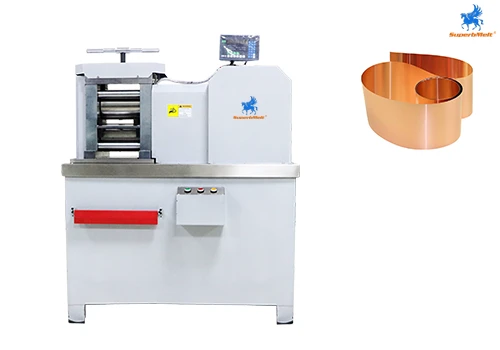
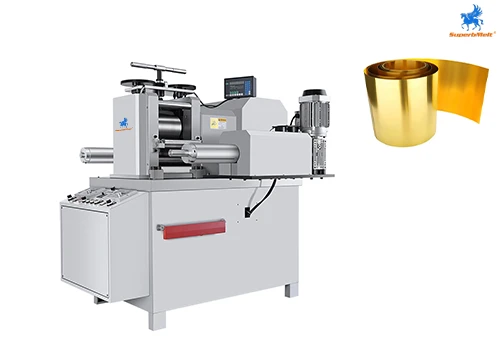
SuperbMelt Precision Rolling Mill is expertly designed for jewelry casting, primarily used to press and shape metal sheets of gold, silver, copper, platinum, and more, for creating necklaces, bracelets, rings, and various other jewelry pieces.
Compared to traditional manual rolling mills, the SuperbMelt Precision Rolling Mill offers increased efficiency and higher productivity. Our rolling mills employ electrically-powered rolling, making the production of jewelry in bulk a breeze.
SuperbMelt rolling mills are also customizable, offering options for double-head rolling mills, continuous rolling mills, and other high-efficiency rolling solutions tailored to meet specific customer requirements.
SuperbMelt Precision Rolling Mill
| Model number | SPB-YX-5P | SPB-YBP-10P | SPB-2YXP-10P | SPB-JM-5.5P |
| Photo | 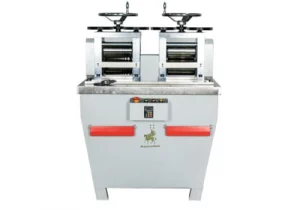 | 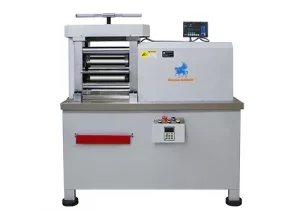 | ||
| Type | 5.5P Sheet Rolling Machine | 10P Four Roller Sheet Rolling Machine | 10P Double-head Rolling Machine | 5.5P Tungsten Steel Sheet Rolling Machine |
| Power source(V) | 380 | 380 | 380 | 380 |
| Power(kw) | 4 | 7.5 | 7.5 | 4 |
| Roller Size(D*L mm) | 105*200 | Large Shaft:180*180;Small Shaft:48*180 | 120*200 | Tungsten Steel 110*80 |
| Max Thickness(mm) | 9 | 0.3 | 11 | 7 |
| Revolving Speed(rpm) | 22 | 0-22 Adjustable Speed | 0-22 double speed | 12 |
| Lubricating System | Automatic Lubricating Oil Supply | Automatic Lubricating Oil Supply | Automatic Lubricating Oil Supply | Automatic Lubricating Oil Supply |
| Wire Rolling Size(mm) | / | / | 14-0.8mm (Customized) | / |
| Max Rolling Width | 50 | 100 | 50 | 50 |
| Dimensions(mm) | 530*600*1380 | 250*1020*1520 | 980*650*1450 | 780*540*1470 |
| Weight(kg) | 370 | 820 | 980 | 400 |
| Model number | SPB-YP-10PZQ | SPB-YP-10PZQ-B | SPB-YP-20A | SPB-LY5D |
| Photo | 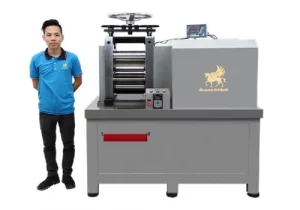 | 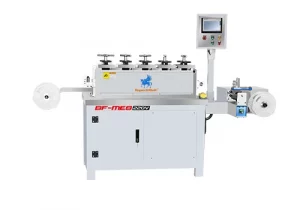 | ||
| Type | 10P Enhanced Sheet Rolling Machine | 10P Automatic Sheet Rolling Machine | 20P Sheet Rolling Machine | 5 Track Continuous Sheet Rolling Machine |
| Power source(V) | 380 | 380 | 380 | 380 |
| Power(kw) | 7.5 | 7.5 | 15 | 7.5 |
| Roller Size(D*L mm) | 140*180 | 140*180 | 200*300 | 120*80 |
| Max Thickness(mm) | 28 | 28 | 30 | 5 |
| Revolving Speed(rpm) | 18 | 0-24 Adjustable Speed | 0-12 | 0-18 |
| Lubricating System | Automatic Lubricating Oil Supply | Automatic Lubricating Oil Supply | Automatic Lubricating Oil Supply | Automatic Lubricating Oil Supply |
| Wire Rolling Size(mm) | / | / | / | / |
| Max Rolling Width(mm) | 60 | 60 | 200 | 30 |
| Dimensions(mm) | 1030*715*1350 | 1250*1160*1350 | 1630*770*1640 | 1230*680*1250 |
| Weight(kg) | 700 | 620 | 1800 | 700 |
- Precision Crafting: SuperbMelt rolling mills are engineered with precision, ensuring consistent and detailed results in jewelry production.
- Versatility: These rolling mills are perfect for shaping various metals, including gold, silver, copper, and platinum, making them versatile for jewelry making.
- Increased Efficiency: Compared to traditional manual rolling mills, SuperbMelt rolling mills offer higher efficiency and productivity, thanks to their electrically-powered operation.
- Customization: SuperbMelt provides options for customization, including double-head rolling mills and continuous rolling mills, to meet specific customer needs.
- Quality and Durability: Crafted from high-quality materials, SuperbMelt rolling mills are built to last, ensuring long-term performance and reliability in jewelry manufacturing.
- Professional-Grade Tools: Trusted by artisans and jewelers worldwide, these rolling mills deliver professional-level results in jewelry craftsmanship.
These features and advantages make SuperbMelt rolling mills an ideal choice for jewelry manufacturers, enabling precision, efficiency, and reliability in the production of exquisite jewelry pieces.
SuperbMelt Precision Rolling Mill, are versatile metalworking tools used for shaping, flattening, and texturing various metals, particularly in jewelry production, metalworking, and craftsmanship, offering precision, efficiency, and customization.
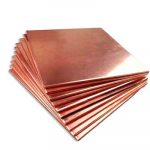
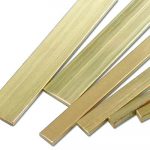

Why SuperbMelt Precision Rolling Mill



Any Question About SuperbMelt Precision Rolling Mill
FAQ Guide of Precision Rolling Mill
- 1. What is 4 high rolling mills?
- 2. What is the best rolling mill?
- 3. What is 6 high rolling mill?
- 4. What are the disadvantages of a 4-high rolling mill?
- 5. How do I choose a rolling mill?
- 6. Is a two roll mill better than a three roll mill?
- 7. What is jewelry rolling machine?
- 8. Do you need a rolling mill for jewelry?
- 9. How do I choose a rolling mill?
- 10. What is the purpose of rolling machine?
1. What is 4 high rolling mills?
A 4-high rolling mill is a type of rolling mill with four rolls in two pairs, which can be arranged in various configurations. This setup allows for greater precision and control in shaping and reducing the thickness of metal sheets or wire. It is commonly used in metalworking, including in the production of sheet metal, foils, and wire, to achieve desired thickness and surface finish.
2. What is the best rolling mill?
The best rolling mill depends on the specific needs and requirements of the user. Some popular and well-regarded rolling mill brands in the market include Durston, PepeTools, and SuperbMelt. To determine the best rolling mill, one should consider factors like the type of materials to be rolled, the desired features (such as the number of rolls, width capacity, and the ability to create specific textures), and the budget. It’s advisable to research and compare different brands and models to find the one that suits your individual needs.
3. What is 6 high rolling mill?
A 6-high rolling mill is a type of rolling mill with six rolls in two sets of three rolls. This configuration allows for greater precision and control in the rolling process, particularly in terms of reducing the thickness of metal sheets and achieving desired surface finishes. 6-high rolling mills are commonly used in industries such as metalworking, steel manufacturing, and aluminum production, where precise thickness control and a high degree of flatness are essential for the final product.
4. What are the disadvantages of a 4-high rolling mill?
Limited Thickness Reduction: 4-high rolling mills may have limitations in achieving extremely high levels of thickness reduction compared to other types of rolling mills like the 6-high or 20-high mills.
Reduced Surface Finish: Achieving a very smooth surface finish can be more challenging with a 4-high mill, particularly when rolling materials with intricate patterns or textures.
Roll Deflection: In some cases, 4-high mills can experience roll deflection, which may affect the precision of the rolling process, especially when working with thicker materials.
Complex Setup: The setup and adjustment of the rolls in a 4-high rolling mill can be more complex compared to simpler mills, potentially requiring more time and effort.
Cost: These mills can be relatively expensive, and their complexity may lead to higher maintenance and operating costs.
It’s important to note that the specific disadvantages of a 4-high rolling mill can vary depending on factors such as the design and quality of the mill, the materials being processed, and the operator’s skill and experience. Despite these potential disadvantages, 4-high rolling mills are widely used in various industries and offer many advantages in terms of precision and control.
5. How do I choose a rolling mill?
Choosing a rolling mill involves considering several factors to ensure it meets your specific needs. Here’s a guide on how to choose a rolling mill:
- Material and Thickness: Determine the type of materials (e.g., metal, jewelry, wire) and their thickness you plan to work with. Ensure the mill you choose can handle these materials effectively.
- Width Capacity: Consider the maximum width you need for your projects. Some rolling mills have limited width capacities, so choose one that accommodates your requirements.
- Roller Type: Decide on the number of rolls and their configuration. Options include 2-high, 4-high, 6-high, and more. Each has its advantages, with more rolls typically offering greater precision.
- Texture and Design Needs: If you require textured or patterned surfaces, look for mills that offer features like pattern rollers or the ability to add textures.
- Budget: Set a budget based on your requirements. Quality rolling mills come in a range of prices, so balance your budget with the features you need.
- Brand and Quality: Research reputable brands known for producing durable, high-quality mills. Read reviews and seek recommendations from experienced users.
- Durability: Assess the build quality and materials used in the rolling mill to ensure it will withstand regular use.
- Maintenance and Support: Inquire about maintenance requirements and the availability of customer support. Reliable customer service can be invaluable.
- Used vs. New: Consider whether a new or used rolling mill suits your needs and budget.
- Customization: If you have specific requirements, look for mills that can be customized to meet your needs.
- Safety Features: Check for safety features, such as emergency stop buttons and safety guards, to ensure safe operation.
- Warranty: Find out if the mill comes with a warranty and what it covers.
- Size and Portability: Assess the size and weight of the mill and determine if it’s portable or needs a permanent location.
- Training and Manuals: Consider mills that provide training resources and comprehensive user manuals for beginners.
- User Reviews: Read user reviews and seek feedback from experienced users to gain insights into the mill’s performance and ease of use.
Remember that the best rolling mill for you depends on your specific needs, so take your time to research and evaluate your options before making a decision.
6. Is a two roll mill better than a three roll mill?
The choice between a two-roll mill and a three-roll mill depends on your specific application and requirements. Both types have their advantages and disadvantages.
- Two-Roll Mill:
Simplicity: Two-roll mills have a simpler design with two rolls that rotate in opposite directions. They are relatively easy to operate and maintain.
Cost-Effective: Generally, two-roll mills are more cost-effective compared to three-roll mills, making them a good choice for those with budget constraints.
Compact: They are often more compact, making them suitable for smaller workspaces.
Less Precision: Two-roll mills may offer less precision compared to three-roll mills, which can be a limitation for certain applications.
Smaller Batch Sizes: They are typically used for smaller batch sizes.
- Three-Roll Mill:
Enhanced Precision: Three-roll mills provide better precision and control, making them suitable for applications where high precision is required.
Uniform Dispersion: They are excellent for achieving uniform dispersion and particle size reduction, making them suitable for industries like cosmetics and pharmaceuticals.
Adjustable Gaps: Three-roll mills often have adjustable gaps between the rolls, allowing for precise control over the thickness or fineness of the material.
Larger Production Capacity: These mills are generally more suitable for larger production capacities due to their precision and consistency.
Wider Range of Applications: They are versatile and can be used in a wider range of industries, including paints, inks, and adhesives.
In summary, a two-roll mill is a more cost-effective and straightforward option for simpler applications, smaller batch sizes, and limited precision requirements. On the other hand, a three-roll mill offers superior precision, better dispersion, and greater versatility, making it the preferred choice for applications where these characteristics are crucial. Your choice should align with your specific needs and the nature of your production process.
7. What is jewelry rolling machine?
A jewelry rolling machine, also known as a jewelry rolling mill, is a specialized tool used in jewelry making and metalworking. It plays a pivotal role in the production of jewelry, especially in shaping and forming metal materials. The machine consists of two or more metal rollers that can be adjusted to various positions.
Here are some key functions and uses of a jewelry rolling machine:
- Sheet Metal Reduction: Jewelry rolling machines are primarily used to reduce the thickness of metal sheets or wires. This process is crucial for creating uniform and precise metal sheets for various jewelry pieces.
- Texture and Pattern: Jewelry artisans use rolling mills to add texture, patterns, or designs to metal surfaces. By passing metal through the rollers, they can achieve unique textures that enhance the aesthetics of the final jewelry.
- Wire Production: Rolling machines are used to produce jewelry wires of various thicknesses and shapes. These wires are then used in creating intricate designs for necklaces, bracelets, and other jewelry.
- Wire Drawing: The rolling mill can also be equipped with additional attachments to draw metal wires into thinner diameters for specific jewelry designs.
- Flatting and Shaping: The machine is essential for flattening, shaping, and resizing metal pieces with precision, which is crucial for achieving consistent results in jewelry production.
jewelry rolling machine is a versatile and indispensable tool for jewelry makers and metalworkers. It enables them to work with various metals, control thickness, and add unique textures and patterns to create stunning and finely crafted jewelry pieces.
8. Do you need a rolling mill for jewelry?
Whether you need a rolling mill for jewelry-making depends on your specific jewelry design and production requirements. Rolling mills are valuable tools for many jewelry artisans, but their necessity can vary based on the following factors:
- Design Complexity: If your jewelry designs involve intricate patterns, textures, or unique shapes on metal surfaces, a rolling mill can be highly beneficial. It allows you to add these elements with precision and consistency.
- Metal Thickness Control: Rolling mills are essential for controlling the thickness of metal sheets or wires. If your jewelry pieces require uniform metal components, a rolling mill becomes indispensable.
- Wire Production: If your jewelry designs include custom wires of various diameters, rolling mills are excellent for producing these wires with the desired thickness and shape.
- Customization: Rolling mills provide the flexibility to customize metal components, which is crucial if you create one-of-a-kind or personalized jewelry.
- Material Selection: The need for a rolling mill also depends on the type of metals you work with. If you primarily use precious metals like gold, silver, or platinum, a rolling mill is often essential. It’s less necessary for materials like beads, gemstones, or non-metal components.
- Production Scale: For small-scale jewelry making or hobbyist projects, a rolling mill may not be as critical. However, for larger-scale production or professional jewelry making, a rolling mill significantly enhances efficiency and precision.
In conclusion, a rolling mill can greatly benefit jewelry makers by providing control over metal thickness, facilitating design customization, and enabling the creation of unique textures and patterns. However, its necessity depends on the nature of your jewelry designs and the scale of your production.
9. How do I choose a rolling mill?
Choosing the right rolling mill for your jewelry-making or metalworking needs is crucial for achieving your desired results. Here are some key factors to consider when selecting a rolling mill:
- Type of Mill:
Combination vs. Flat vs. Wire Rolling Mill: Determine the type of mill you need based on your specific requirements. Combination mills offer more versatility, while flat mills are ideal for sheet metal, and wire mills are designed for creating wire.
- Roller Width and Diameter:
Consider the roller width and diameter. Wider rollers allow for working with larger metal sheets, while smaller rollers are suitable for finer details.
- Construction and Durability:
Look for mills made from high-quality materials, such as hardened steel. A sturdy frame and construction are essential for long-term use.
- Reduction Gear Ratio:
The gear ratio affects the force applied to the metal. A higher gear ratio offers more reduction, allowing for thinner sheet metal or wire.
- Texture Rollers and Attachments:
Some rolling mills come with texture rollers or attachments for adding patterns and designs to metal. Consider if this feature is important for your work.
- Maintenance and Ease of Use:
Check if the mill is easy to maintain and clean. It’s essential for the longevity of your equipment.
- Budget:
Determine your budget and find a rolling mill that offers the features you need within your price range. Keep in mind that quality is crucial for durability and precision.
- Brand and Reviews:
Research reputable brands and read reviews from other users to gauge the quality and performance of the rolling mill.
- Available Space:
Consider the available space in your workshop or studio. Ensure that the mill fits comfortably in your workspace.
- Intended Use:
Think about the type of jewelry or metalwork you’ll be creating. If you work with precious metals and require precise results, invest in a high-quality rolling mill.
- Customer Support and Warranty:
Check if the manufacturer offers good customer support and a warranty. This can be valuable for troubleshooting and addressing issues.
- Weight and Portability:
If you plan to move your rolling mill, consider its weight and portability. Some mills are more compact and easier to transport.
- Safety Features:
Look for safety features, such as emergency stop buttons, to ensure a safe working environment.
By considering these factors, you can choose a rolling mill that aligns with your specific needs and helps you achieve your jewelry-making or metalworking goals.
10. What is the purpose of rolling machine?
A rolling machine, also known as a rolling mill, serves the primary purpose of shaping and reducing the thickness of metal sheets or wires through a series of compressive forces. The key purposes of a rolling machine are:
- Thickness Reduction: Rolling machines are used to reduce the thickness of metal sheets or wires. This is essential for creating materials of various thicknesses for different applications.
- Shape Modification: They can alter the shape of metal, forming it into flat sheets, coils, or specific profiles. The rolling process can also be used to create textured or patterned surfaces on metals.
- Improved Surface Finish: Rolling can enhance the surface finish of metals, making them smoother and more polished. This is particularly important in jewelry making and precision metalworking.
- Work-Hardening: The rolling process can work-harden metals, making them stronger and more resilient. This is valuable in applications where durability is essential.
- Uniformity: Rolling ensures uniform thickness and quality throughout the material, making it ideal for consistent production of items like jewelry, coins, and metal sheets.
- Material Strength: It increases the material’s tensile strength, allowing it to withstand higher stress and pressure.
- Customization: Rolling machines enable the customization of metal materials to suit specific project requirements. This flexibility is valuable in various industries.
- Cost Efficiency: They offer a cost-effective means of producing metal materials in large quantities with precision and minimal waste.
- Versatility: Rolling machines are versatile and find applications in various industries, including jewelry making, metalworking, construction, and manufacturing.
In summary, rolling machines play a pivotal role in metalworking and manufacturing, providing a versatile and efficient means of processing metal materials to meet a wide range of industrial and artistic needs.

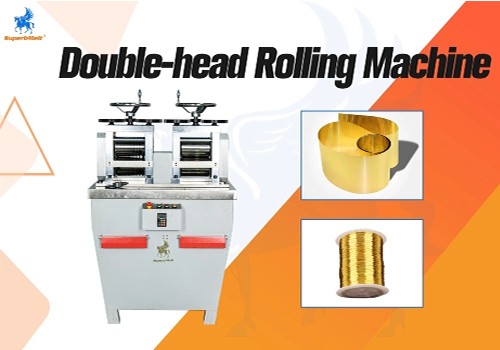
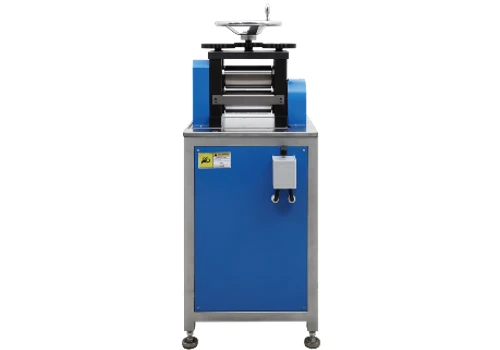
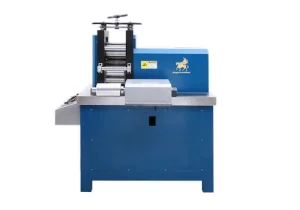
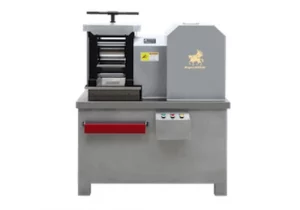
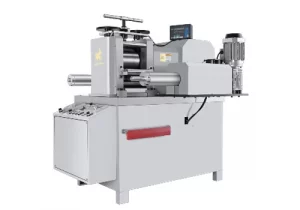
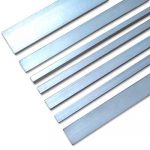
 © Copyright 2008-2021 Superb Electromachinery Co., Limited
© Copyright 2008-2021 Superb Electromachinery Co., Limited